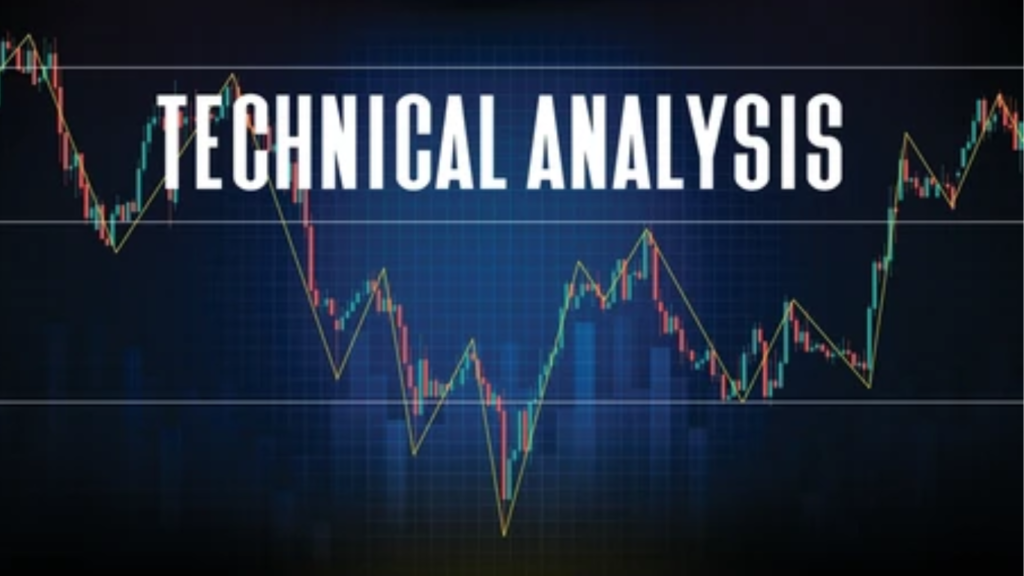Starting your trading journey with a small capital can seem challenging, but with the right strategies, tools, and understanding of how to start trading, it’s possible to build a successful trading portfolio. Whether you’re interested in intraday trading, options trading, or using chart trading to guide your decisions, this guide will help you navigate the complexities of the stock market, particularly focusing on NSE trading hours, the best online trading platforms, and the effective use of intraday screeners.

1. Understanding NSE Trading Hours
Before diving into trading, it’s crucial to understand when the market operates. The National Stock Exchange (NSE) in India has specific trading hours that you need to know:

Pre-open Session: The pre-open session runs from 9:00 to 9:15 a.m. It allows traders to place orders before the actual market opens, which helps stabilize the market after significant news or events.
Regular Trading Session: The regular trading session is from 9:15 AM to 3:30 PM. During this period, you can buy and sell stocks, monitor market trends, and make real-time decisions.
Post-closing Session: The post-closing session runs from 3:40 PM to 4:00 PM, where the closing prices of the securities are calculated, and you can place orders at the closing price.
For those starting with small capital, understanding these hours helps in planning your trades better. You can take advantage of market movements, especially during the opening and closing hours when volatility tends to be higher.

2. Choosing the Best Online Trading Platform
Selecting the right online trading platform is crucial for success, especially when trading with small capital. Here are some factors to consider:

Low Brokerage Fees: Since you’re starting with small capital, it’s essential to choose a platform with low brokerage fees to maximize your profits. High fees can quickly eat into your returns, making it harder to grow your capital.
User-friendly Interface: A platform with an easy-to-use interface will help you execute trades more efficiently. Look for features like chart trading and intraday screener integration that make the process smoother.
Advanced Tools and Features: Platforms offering advanced tools like chart trading, options trading strategies, and customizable intraday screeners can significantly enhance your trading experience. These tools provide insights that help you make informed decisions.
Mobile Trading: Mobile trading platforms allow you to trade on the go, which is essential for intraday traders who need to monitor market movements constantly.
Some of the best online trading platforms that cater to traders with small capital include Zerodha, Upstox, and Angel One. These platforms offer a combination of low fees, powerful tools, and a user-friendly interface, making them ideal for beginners.

3. Using an Intraday Screener
An intraday screener is an invaluable tool for traders, especially when dealing with small capital. This tool helps you identify stocks that meet specific criteria, such as price action, volume, and momentum, during the trading day. Here’s how to effectively use an intraday screener:

Set Clear Criteria: Define the parameters that are important for your trading strategy. For example, you might look for stocks with high volume, strong price momentum, or specific chart patterns like support and resistance levels.
Monitor Volume: Volume analysis is critical when trading with small capital. High volume often indicates strong market interest in a stock, which can lead to significant price movements. Using an intraday screener to track volume can help you spot trading opportunities early.
Focus on Price Action: Price action refers to the movement of a stock’s price over time. By using an intraday screener, you can track these movements and identify patterns that indicate potential entry or exit points.
Integrate with Chart Trading: Many trading platforms allow you to integrate intraday screeners with chart trading tools. This integration enables you to visualize the stocks that meet your criteria and make decisions based on real-time data.
By consistently using an intraday screener, you can filter out the noise and focus on stocks that align with your trading strategy, thereby increasing your chances of making profitable trades.

4. Exploring Option Trading Strategies
Option trading can be a powerful way to leverage small capital, but it requires a good understanding of the strategies involved. Here are some popular options trading strategies:

Covered Call: This strategy involves buying a stock and simultaneously selling a call option on that stock. It’s a conservative strategy that generates income while providing limited downside protection.
Straddle: A straddle involves buying both a call option and a put option with the same strike price and expiration date. This strategy is useful when you expect significant price movement but are unsure of the direction.
Iron Condor: The iron condor strategy involves selling a call and a put option at different strike prices while simultaneously buying a call and a put option farther out of the money. This strategy works well in low-volatility markets, allowing you to profit from time decay.
Bull Call Spread: This strategy involves buying a call option at a lower strike price and selling a call option at a higher strike price. It’s ideal for traders who are moderately bullish on a stock but want to limit their risk.
When trading options with small capital, it’s essential to use strategies that limit your risk. The above strategies provide various levels of risk management, allowing you to tailor your approach based on your capital and market outlook.

5. Mastering Chart Trading
Chart trading is a technique where traders use charts to analyze and make trading decisions. It’s particularly useful when you’re trading with small capital because it allows you to identify trends, patterns, and key levels that can guide your trades. Here’s how to get started:

Learn Basic Chart Patterns: Start by familiarizing yourself with basic chart patterns like head and shoulders, double tops and bottoms, and triangles. These patterns can provide signals for potential price movements.
Use Technical Indicators: Technical indicators like moving averages, Bollinger Bands, and RSI (Relative Strength Index) are essential tools in chart trading. They help you understand market trends and identify potential entry and exit points.
Analyze Support and Resistance Levels: Support and resistance levels are key price points where a stock tends to reverse its trend. Identifying these levels on a chart can help you make more informed trading decisions.
Practice with Demo Accounts: Many trading platforms offer demo accounts where you can practice chart trading without risking real money. This practice allows you to develop your skills and gain confidence before trading with your capital.
Combined with Volume Analysis: Volume analysis plays a critical role in chart trading. A high volume on a breakout from a chart pattern can confirm the validity of the pattern, increasing the likelihood of a successful trade.
By mastering chart trading, you can make more informed decisions and improve your chances of success, even with small capital. The key is to practice regularly, refine your techniques, and stay disciplined in your approach.

6. Risk Management Strategies
When trading with small capital, managing risk is crucial. Without proper risk management, you could quickly lose your capital. Here are some strategies to consider:

Set Stop Losses: A stop loss is an order placed to sell a stock when it reaches a certain price. Setting a stop loss helps protect your capital by limiting potential losses on a trade.
Diversify Your Portfolio: Diversification involves spreading your capital across different stocks or asset classes. This strategy reduces your overall risk because the performance of one stock won’t drastically impact your entire portfolio.
Limit Your Position Size: When trading with small capital, avoid putting all your money into a single trade. Limit your position size to a small percentage of your total capital, which helps protect your portfolio from significant losses.
Stay Informed: Keep yourself updated with market news, trends, and events that could impact your trades. Staying informed allows you to make better decisions and adjust your strategy as needed.
Use Leverage Cautiously: While leverage can amplify your profits, it also increases your risk. Use leverage cautiously, especially when trading with small capital, to avoid significant losses.
Implementing these risk management strategies will help protect your small capital and allow you to grow it gradually over time. Remember, the goal is not just to make profits but to preserve your capital so you can continue trading.

7. Conclusion
Starting to trade with small capital may seem daunting, but with the right approach and tools, it’s entirely possible to build a successful trading portfolio. By understanding NSE trading hours, choosing the best online trading platforms, using intraday screeners, mastering option trading strategies, and excelling in chart trading, you can maximize your chances of success.
The key is to stay disciplined, manage your risks effectively, and continuously educate yourself on the market. Whether you’re a beginner or an experienced trader, these strategies will help you navigate the stock market with confidence. Remember, the Millionaires Group is here to support you on your trading journey, offering resources and insights to help you succeed. Keep refining your skills, and over time, you’ll see your small capital grow into something substantial.
FOR A FREE STOCK MARKET SEMINAR VISIT HERE
CALLS @ 9986622277
Disclaimer
The information provided here is for general informational purposes only and should not be construed as financial advice. Investing in the stock market involves inherent risks, and there is no guarantee of profits or protection against losses. Before making any investment decisions, it is essential to conduct thorough research and seek advice from a qualified financial advisor or professional.
